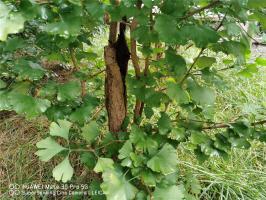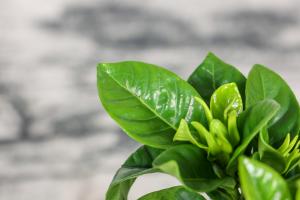Plant Cell Shape: Understanding the Structure and Function
Plant cells are the building blocks of plants, just like animal cells are for animals. Unlike animal cells, plant cells have a unique shape due to the presence of a cell wall, chloroplasts for photosynthesis, and large central vacuoles. Understanding the shape of plant cells is essential to understanding their structure and function. In this article, we will explore plant cell shape and its importance.
The Basic Shape of Plant Cells
Plant cells are typically rectangular or cuboidal in shape. The shape is determined by the presence of a rigid cell wall made of cellulose, hemicellulose, and lignin. The cell wall is essential for maintaining the shape of the cell and providing structural support to the entire plant. The shape of the cell wall varies from species to species, and it is one of the factors that determine the overall shape of the plant cell.
The Structural Components that Determine Plant Cell Shape
There are several structural components that determine plant cell shape, which include:
Cell wall: As mentioned earlier, the cell wall is a rigid structure that determines the shape of the cell.
Cytoskeleton: The cytoskeleton is a network of protein fibers that help in maintaining the cell's shape and providing mechanical support. It is made up of microfilaments, microtubules, and intermediate filaments.
Plasmodesmata: These are microscopic channels that connect adjacent plant cells, allowing them to communicate and transport materials.
Intracellular membrane system: This includes the endoplasmic reticulum, Golgi apparatus, and other membrane-bound organelles that play a significant role in the production, processing, and transport of proteins and lipids within the cell.
Chloroplasts: These are specialized organelles that contain chlorophyll, which is essential for photosynthesis.
Large Central Vacuole: The central vacuole is a large, fluid-filled space in the middle of plant cells that provides support, maintains turgor pressure, and stores nutrients and waste.
Variations in Plant Cell Shape
Although the basic shape of plant cells is rectangular or cuboidal, there are several variations depending on the type of cell and its function. Some of the variations in plant cell shape include:
Leaf cells: Leaf cells are usually elongated and contain a large number of chloroplasts for efficient photosynthesis.
Root cells: Root cells are typically elongated and have fine, hair-like structures called root hairs that increase their surface area for absorption of water and minerals.
Xylem cells: Xylem cells are long, tube-like cells that transport water and minerals from the roots to the rest of the plant.
Phloem cells: Phloem cells are also tube-like cells that transport sugars and other nutrients from the leaves to the rest of the plant.
Giant cells: Some plants have cells that can become extremely large, up to several centimeters in length. These cells are usually found in the roots and provide extra support to the plant.
The Importance of Plant Cell Shape
The shape of plant cells is critical to the proper functioning of the plant as a whole. It allows the cells to perform their specific functions efficiently, such as photosynthesis, nutrient absorption, and transport of materials through the plant. The maintenance of proper cell shape and structure is essential for the plant to grow, develop, and reproduce. Any changes or disruptions in plant cell shape can impact the plant's growth and survival.
Conclusion
In conclusion, understanding the shape of plant cells is essential to understanding the structure and function of plant cells. The rectangular or cuboidal shape of plant cells is determined by the presence of a rigid cell wall, and variations in shape occur depending on the type of cell and its function. The structural components that determine plant cell shape include the cell wall, cytoskeleton, plasmodesmata, intracellular membrane system, chloroplasts, and the large central vacuole. Maintaining proper cell shape and structure is crucial for the plant's growth and survival, and any changes or disruptions can impact its overall health.

 how many times do yo...
how many times do yo... how many planted tre...
how many planted tre... how many pine trees ...
how many pine trees ... how many pecan trees...
how many pecan trees... how many plants comp...
how many plants comp... how many plants can ...
how many plants can ... how many plants and ...
how many plants and ... how many pepper plan...
how many pepper plan...
































